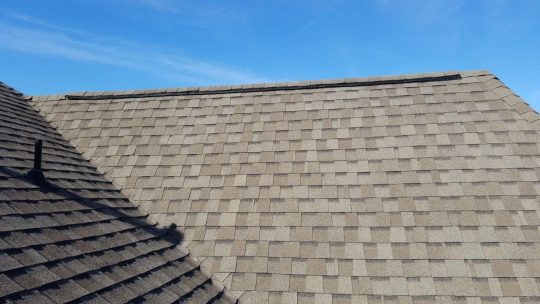Asphalt Shingles: The Definitive GuideAsphalt Shingles: The Definitive Guide

Asphalt shingles, also known as composition shingles, have held their position as a popular choice for roofing across the United States and beyond. Distinguished by their durability, affordability, and variety, they continue to be the backbone of many residential and commercial structures.
Developed around the early 20th century, asphalt shingles consist primarily of either an organic or fiberglass base, which is then saturated and coated with asphalt, and finally sprinkled with mineral granules. This composite structure lends the shingles their namesake and contributes to their admirable resistance to external weather conditions.
Two principal categories of asphalt shingles exist: 3-tab and architectural (or dimensional) shingles. 3-tab shingles are identified by their uniform size and shape, resembling three separate pieces, while architectural shingles are multi-layered, providing a three-dimensional appearance. The latter type is more expensive, but it’s also more durable and visually appealing.
Advantages of Asphalt Shingles
One of the biggest advantages of asphalt shingles is their affordability. They are significantly less expensive compared to other roofing materials like slate, tile, or metal, while still providing substantial protection. Their low cost, combined with an average lifespan of 20-30 years (even 50 years for high-quality architectural shingles), ensures an excellent return on investment.
Ease of installation and repair is another considerable advantage. The lightweight nature of these shingles allows for speedy installation and reduces the burden on the supporting structure. If damage does occur, individual shingles can be replaced without disrupting the entire roof, saving time and money in the process.
Moreover, asphalt shingles offer wide-ranging aesthetic options. They are available in an assortment of colors, shapes, and textures that can mimic the look of more expensive roofing materials. This versatility makes them a fitting choice for virtually any architectural style.
Environmental Considerations and Innovations
Despite their benefits, asphalt shingles have often been criticized for their environmental impact, primarily due to their petroleum content and the landfill waste they generate at the end of their life cycle. However, the industry has been making strides in addressing these concerns.
Innovations in asphalt shingle manufacturing have led to the development of recycled shingles, where the waste from old roofs is processed and used in new products. Furthermore, shingle recycling programs have been implemented across many regions, turning old shingles into asphalt pavement, reducing the burden on landfills.
Care and Maintenance
Like any other roofing material, asphalt shingles need regular maintenance to extend their lifespan and maintain their appearance. Regular inspections, especially after severe weather events, can help detect and repair minor damages before they escalate. Cleaning to remove accumulated debris and moss is also recommended, as it can prevent moisture buildup and consequent damage.
In conclusion, asphalt shingles remain an outstanding choice for homeowners and contractors alike. Their balance of cost-effectiveness, ease of installation, durability, and aesthetic variety makes them a versatile and reliable roofing option. While environmental concerns do exist, innovations in manufacturing and recycling are making this material more sustainable. Regular care and maintenance will only enhance the longevity and performance of an asphalt shingle roof, making it a wise investment for any building.
